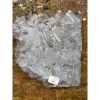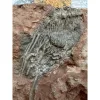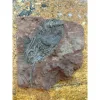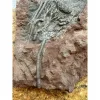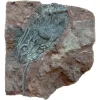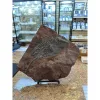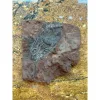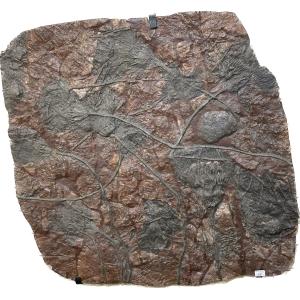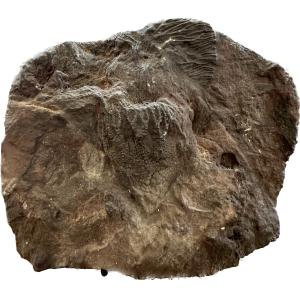Crinoids, commonly known as sea lilies, are marine animals that belong to the class Crinoidea. These fascinating creatures have been in existence for millions of years and are known for their delicate beauty and intricate structures. One particular species of crinoid that stands out is Scyphocrinites Elegans, a species renowned for its exquisite fossil remains found in various parts of the world, including Morocco.
Scyphocrinites Elegans is a species of crinoid that lived during the Devonian period, approximately 416 to 358 million years ago. It is characterized by its distinctive appearance, with a cup-shaped body known as a calyx, a long stem composed of numerous stacked columnals, and branching arms used for filter feeding. The name “Elegans” reflects the graceful and elegant nature of this ancient creature.
Discovery and Fossil Locations
Fossils of Scyphocrinites Elegans have been discovered in various locations around the world, with notable finds in Morocco, Germany, and other parts of Europe. The Moroccan deposits, particularly those in the Anti-Atlas mountains, are renowned for their well-preserved specimens of this species. These fossils are often found in limestone deposits, where the conditions were ideal for the preservation of delicate structures.

Morphology and Anatomy
Scyphocrinites Elegans had a symmetrical body plan, with a central calyx that housed the animal’s internal organs and a stem that attached it to the seabed. The calyx was composed of numerous plates called ossicles, which provided structural support and protection. From the calyx, long, slender arms extended, equipped with feathery pinnules that were used to capture food particles from the water.
Ecology and Behavior
Like modern crinoids, Scyphocrinites Elegans was a filter feeder, using its arms to capture plankton and other small organisms from the water. Its stem allowed it to anchor itself to the seabed, where it could sway gently in the current, maximizing its exposure to food particles. This species was likely an important part of the Devonian marine ecosystem, serving as both predator and prey for other organisms.
The presence of Scyphocrinites Elegans fossils in Morocco and other locations provides valuable insights into the paleoenvironment of the Devonian period. These fossils are often found in limestone deposits, which suggest that the areas where they lived were once shallow, warm seas with clear waters conducive to the growth of coral reefs and other marine life.
Significance and Scientific Importance
The fossils of Scyphocrinites Elegans are highly prized by collectors and paleontologists alike for their beauty and scientific value. These fossils provide important clues about the evolution and ecology of ancient marine life, helping researchers to piece together the complex history of life on Earth. Additionally, studies of Scyphocrinites Elegans fossils can provide insights into past climate conditions and environmental changes.
Evolutionary History
Scyphocrinites Elegans belongs to a group of marine animals known as echinoderms, which also includes starfish and sea urchins. Echinoderms first appeared in the fossil record during the Cambrian period, over 500 million years ago, and have since diversified into a wide range of forms. Crinoids like Scyphocrinites Elegans are believed to have evolved from an early echinoderm ancestor, gradually developing their distinctive features, such as the calyx and filtering arms, to adapt to their marine environment.
The distribution of Scyphocrinites Elegans fossils provides insights into the paleogeography of the Devonian period. During this time, much of the Earth’s landmasses were joined together in a supercontinent known as Gondwana, which included what is now Africa, South America, Antarctica, Australia, and the Indian subcontinent. The presence of Scyphocrinites Elegans fossils in Morocco, which was part of Gondwana, suggests that this species inhabited the shallow seas that covered much of the supercontinent.
Fossilization Process
The exceptional preservation of Scyphocrinites Elegans fossils can be attributed to the process of fossilization. When an organism dies, its remains can be buried by sediment, which protects them from decay and scavenging. Over time, the organic material in the remains is replaced by minerals, creating a fossilized replica of the original organism. The fine details of Scyphocrinites Elegans fossils, such as the intricate plates of the calyx and the delicate pinnules on the arms, are often preserved in exquisite detail thanks to this process.
Scientific Study and Research
Scyphocrinites Elegans fossils have been the subject of extensive scientific study, contributing valuable information to our understanding of ancient marine life. Paleontologists study these fossils to learn more about the anatomy, ecology, and evolutionary history of crinoids. By comparing fossils of Scyphocrinites Elegans with other crinoid species, researchers can also gain insights into the broader patterns of evolution and diversification within the group.
As with all fossils, the preservation of Scyphocrinites Elegans specimens is important for future scientific research and education. Fossil sites, including those in Morocco where Scyphocrinites Elegans fossils are found, are often subject to threats such as erosion, mining, and vandalism. It is crucial to protect these sites and their fossils to ensure that they remain accessible for study and enjoyment by future generations.
Cultural Significance
Scyphocrinites Elegans fossils have not only scientific significance but also cultural importance. In many cultures, fossils have been revered as mystical objects or artifacts with special powers. The intricate beauty of crinoid fossils, including Scyphocrinites Elegans, has inspired artists and artisans for centuries. In some cultures, crinoid fossils are believed to have healing or protective properties, adding to their cultural significance.

Paleoecology and Environmental Insights
The presence of Scyphocrinites Elegans fossils in different geological formations provides valuable insights into the paleoecology of the Devonian period. These fossils indicate that Scyphocrinites Elegans inhabited shallow, tropical seas with clear waters, where they thrived alongside other marine organisms such as corals, brachiopods, and trilobites. By studying the fossilized remains of these organisms, paleontologists can reconstruct ancient ecosystems and understand how they were influenced by factors such as climate change and sea level fluctuations.
Educational Value
Scyphocrinites Elegans fossils are valuable educational tools that can help students and the general public learn about paleontology, evolution, and Earth’s history. Museums and educational institutions often display these fossils to showcase the diversity of life that existed millions of years ago. Interactive exhibits and educational programs allow visitors to engage with these fossils and learn about the scientific principles behind their study.
Challenges in Study and Conservation
Despite their importance, Scyphocrinites Elegans fossils face threats from various human activities, including habitat destruction, climate change, and illegal collecting. Protecting these fossils and their geological sites is essential for preserving them for future generations. Additionally, studying these fossils can be challenging due to their fragile nature and the complex geological processes that have affected them over millions of years.
Future Research and Discoveries
As technology advances, new techniques and tools are being developed to study Scyphocrinites Elegans fossils and other ancient organisms. High-resolution imaging techniques, such as CT scanning, can reveal internal structures of fossils without damaging them, providing new insights into their anatomy and biology. Future discoveries of Scyphocrinites Elegans fossils and related species are likely to further expand our understanding of crinoid evolution and the ancient marine environment.
Prehistoric 101 (Learn about fossils, minerals, and meteorites)
Learn: Crinoid








